Buildings are designed to remain standing even during an earthquake. Even knowing that a well-constructed building will not fall on you, still you must protect yourself from falling objects and other non-structural elements of the building. Earthquake resistance building design requires that the energy that the building gathers from ground shaking is dissipated without structural collapse. But in the end the building may be unserviceable. Hospitals and other critical facilities are subject to stricter regulations and must also remain safe and serviceable in all circumstances. From a seismic resistance viewpoint, a building is designed according to many factors, including the type of ground it is built on, its height, and the materials used.
Every building has a dominant resonance period. The resonance period is the time a building will take to naturally complete a cycle of back-and-forth motion. The taller the building, the longer the resonance period will be and the slower the building will swing. Short buildings will resonate at a faster rhythm than tall buildings. Complex buildings, like high-rises, have several resonance periods and vibration modes and earthquake design must take all these into account.
The most effective technology to protect a building from strong ground shaking is base isolation. Base isolations are made with either shock absorbers or bearings. When the ground shakes due to the seismic waves, the base isolation disconnects the building from the ground’s motion so that little or no shaking is transmitted from the ground to the building. In hospitals with base isolation, critical surgery can pursue even during an earthquake.
Some structures like bridges or very tall buildings can resonate with moderate forcing, like pedestrians walking or mild wind, that may render the structure unsafe or unpleasant to be in. In these cases, engineers may use a tuned mass damper to eliminate this undesirable behaviour. The tuned mass damper will harmlessly dissipate the energy that otherwise would go into the structure.
Did you know?
Different buildings react differently to the same ground shaking.
There are different ways of making buildings resistant to earthquake shaking. Buildings can be built originally with anti-seismic reinforcement, but they can also be retro-fitted at any time.
Building codes in each country and on each region define the rules that the buildings must obey to resist expected ground shaking from earthquakes. Building codes take into account earthquake sources and distance, seismic wave attenuation, and site conditions.
Buildings on soft ground usually suffer larger amplitude ground shaking than buildings on hard rock, in the same area.
Building resonance from ground shaking is like pushing a person in a swing. If applied timely, each push increases the amplitude and energy of each swing until it may get dangerous or destructive for a building.
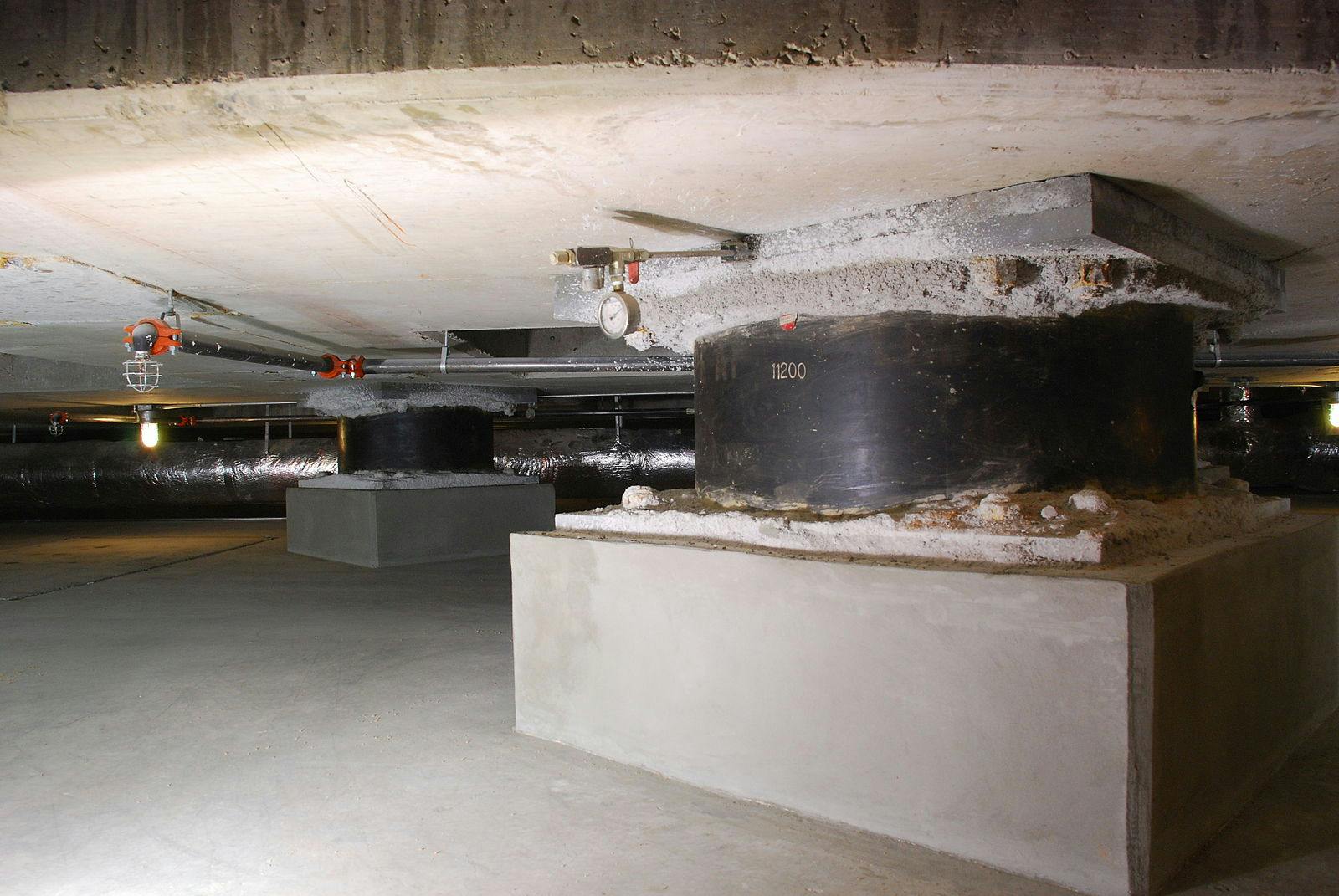
Base isolations are made with either shock absorbers or bearings. When the ground shakes due to the seismic waves, the base isolation disconnects the building from the ground’s motion so that little or no shaking is transmitted from the ground to the building. This image shows the base isolators under the Utah State Capitol, USA

This movie shows how two building models behave when tested in a shake table. The right building is equipped with a seismic base isolation, therefore swings much less.
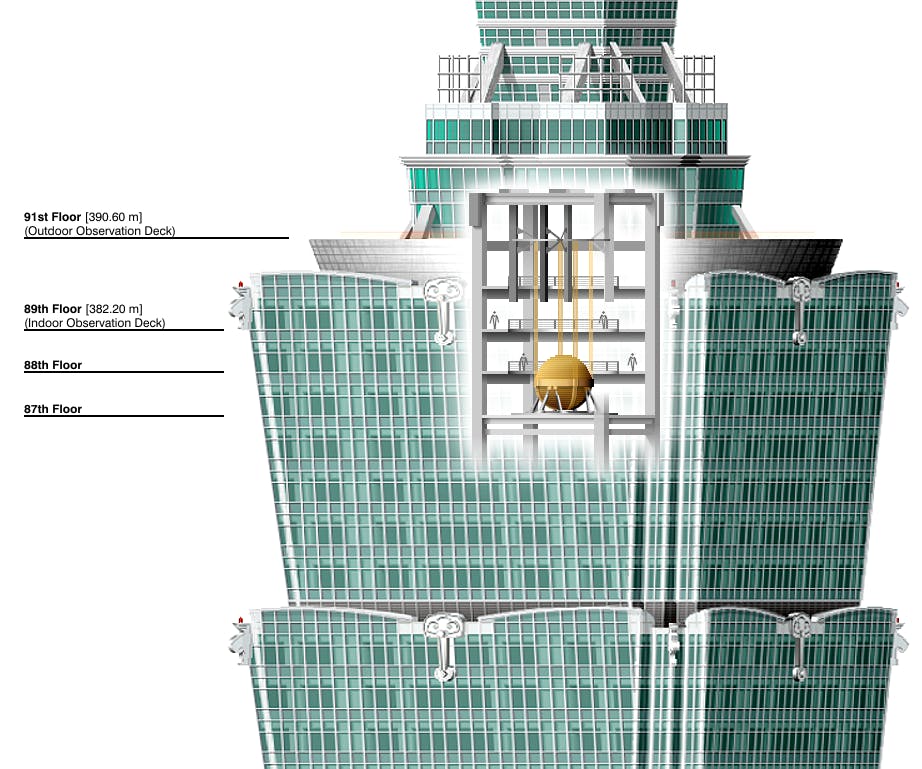
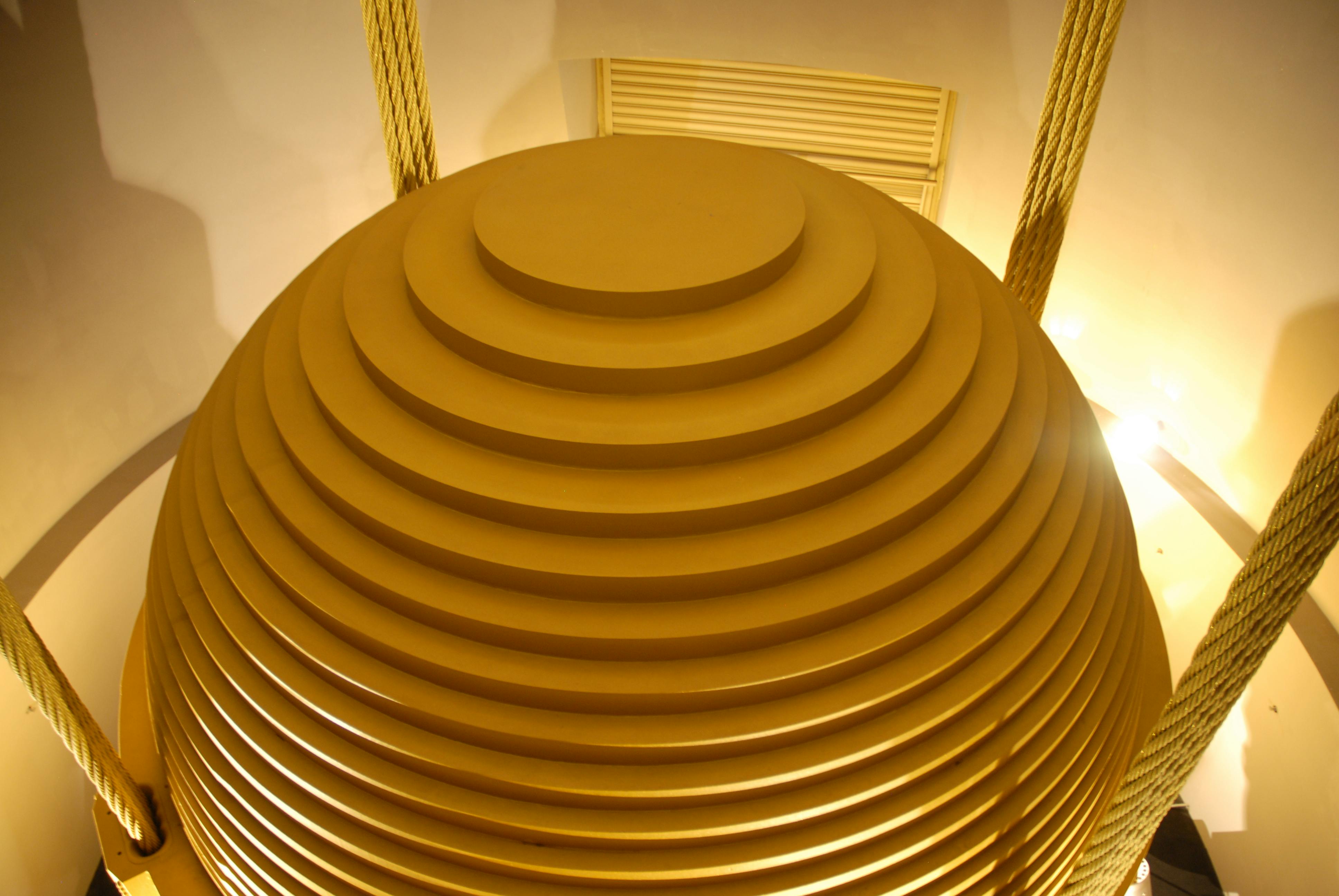
Some buildings are protected from earthquake shaking with a tuned mass damper,which looks just like a pendulum. This system limits the resonance amplitude because the pendulum dissipates part of the energy accumulated by the building when it shakes.These images shows the location of Taipei 101’s largest tuned mass damper inside the building, and mass itself.
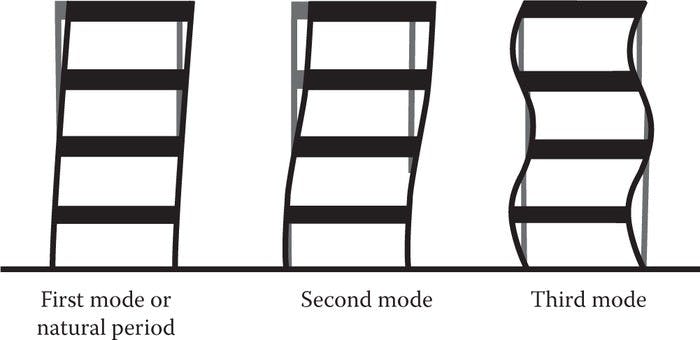
Complex buildings, like high-rises, have several resonance modes and periods.
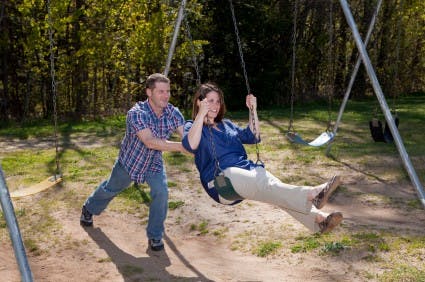
Building resonance from ground shaking is like pushing a person in a swing. If timely applied each push increases the amplitude and energy of each swing until it may get dangerous, or destructive for a building.
Continue Exploring
The Millennium Footbridge had to be closed shortly after its opening due to alarming swaying motion. It was reopened after some additional engineering that included Tuned Mass Dampers.
Taipei 101 is a 508.2 tall building that uses Tuned Mass Dampers. to mitigate the oscillations caused by wind but also by typhoons and earthquakes
Video that explains step-by-step how to build a model of a Tuned Mass Damper and how to test it.
An application that illustrates interactively how earthquakes act on structures, buildings, bridges and dams. Available in English and Portuguese, for Windows and Mac.
Bibliography
Incorporated Research Institutions for Seismology (IRIS), https://www.iris.edu/hq/inclass/animation/building_resonance_the_resonant_frequency_of_different_seismic_waves